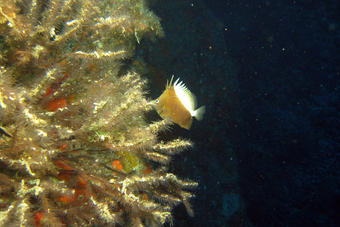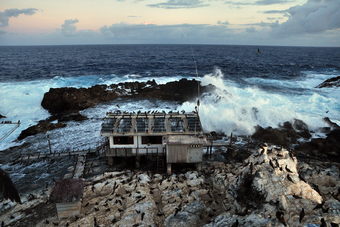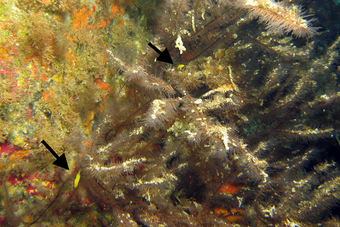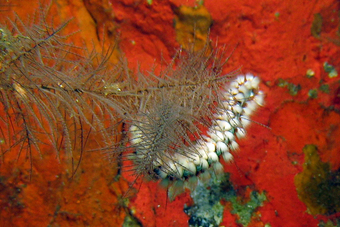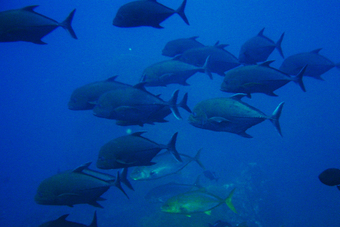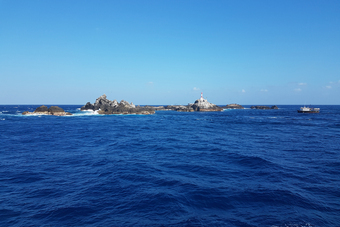Publications:
Rosa et al. 2016
scientific article | Coral Reefs
Mesophotic reef fish assemblages of the remote St. Peter and St. Paul’s Archipelago, Mid-Atlantic Ridge, Brazil
Rosa MR, Alves AC, Medeiros DV, Coni EOC, Ferreira CM, Ferreira BP, Rosa RdS, Amado-Filho GM, Pereira-Filho GH, de Moura RL, Thompson FL, Sumida PYG, Francini-Filho RB
Mesophotic reef fish assemblages (30–90 m depth) of the small and remote St. Peter and St. Paul’s Archipelago (SPSPA), Mid-Atlantic Ridge, Brazil, were characterized using remotely operated vehicles. Ordination analyses identified distinct fish assemblages in the upper (30–50 m) and lower (50–90 m) mesophotic zones, the former characterized by high abundances of species that are also abundant at euphotic reefs (Caranx lugubris, Melichthys niger, Stegastes sanctipauli and Chromis multilineata) and the latter dominated by two mesophotic specialists (Prognathodes obliquus and Chromis enchrysura). Planktivores dominated fish assemblages, particularly in the upper mesophotic zone, possibly due to a greater availability of zooplankton coming from the colder Equatorial Undercurrent in mesophotic depths of the SPSPA. Turf algae, fleshy macroalgae and scleractinian corals dominated benthic assemblages between 30 and 40 m depth, while bryozoans, black corals and sponges dominated between 40 and 90 m depth. Canonical correspondence analysis explained 74 % of the relationship between environmental characteristics (depth, benthic cover and complexity) and structure of fish assemblages, with depth as the most important independent variable. Juveniles of Bodianus insularis and adults of P. obliquus and C. enchrysura were clearly associated with branching black corals (Tanacetipathes spp.), suggesting that black corals play key ecological roles in lower mesophotic reefs of the SPSPA. Results from this study add to the global database about mesophotic reef ecosystems (MREs) and provide a baseline for future evaluations of possible anthropogenic and natural disturbances on MREs of the SPSPA.
30- 90 m
Mesophotic “mentions”
40 x (total of 4330 words)
Classification
* Presents original data
* Focused on 'mesophotic' depth range
* Focused on 'mesophotic coral ecosystem'
Fields
Community structure
Ecology
Connectivity
Focusgroups
Fishes
Overall benthic (groups)
Locations
Brazil - St Peter and St Paul Archipelago
Platforms
Remotely Operated Vehicle (ROV)


